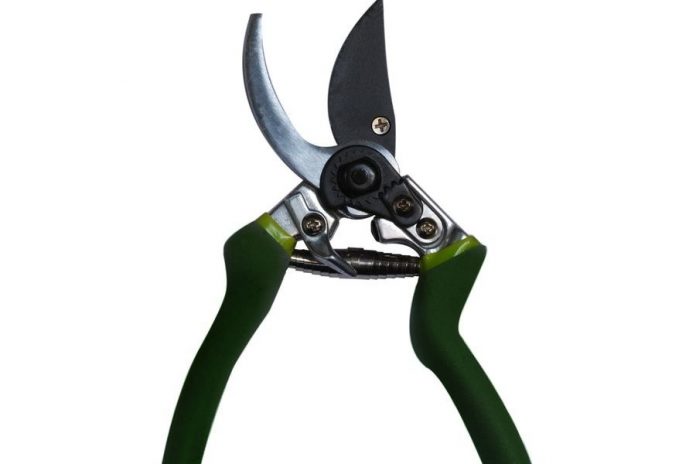 Trees generally forgive bad haircuts, so screw up your courage, and remember (1) there is a learning curve for pruning, and (2) the good news is most errors will not be fatal. To quote Winston Churchill, who probably never pruned a tree or shrub, “Success is not final, failure is not fatal: it is the courage to continue that counts.” As murdered crape myrtles prove, pruning victims may become seriously ugly, but not dead.
Trees generally forgive bad haircuts, so screw up your courage, and remember (1) there is a learning curve for pruning, and (2) the good news is most errors will not be fatal. To quote Winston Churchill, who probably never pruned a tree or shrub, “Success is not final, failure is not fatal: it is the courage to continue that counts.” As murdered crape myrtles prove, pruning victims may become seriously ugly, but not dead.
Step 1 is to inventory the garden tool stash for a pair of hand-held pruning shears to cut twigs under 1 inch in diameter. If Mother Hubbard’s cupboard is bare in this case, buy what the pros call “bypass shears.” These hand-held, scissor-like garden implements have 2 short, curved blades that need sharpening now and then.
Next, look for loppers which are usually bypass shears with 2-foot long handles. They may have straight-edged blades. Both items need blade re-sharpening upon occasion.
Get a pruning saw for branches larger than 1 inch in diameter. It will likewise dull from time to time. Unlike that monster carpenter saw out on the garage workbench, a pruning saw has a long narrow blade that fits in tight spots.
Hardware stores offer blade sharpening while-you-wait, and for modest fees. The results are wonderful.
For tall trees and shrubs, remove branches over your head with a ‘pole pruner,’ which has shears or a saw blade at the end of a 4-6 foot pole. This device also comes with a learning curve, and prepare for tired, arms, shoulders, and back.
A word to the wise: keep pole pruners away from power lines and branches around them. Protect noggins and other body parts by avoiding branches directly overhead. Safety comes first. When in doubt, hire a professional to do the job.
Step 2 is figuring out when to prune. The fruit and berry guys at Rodale Press say that depends on what you want to accomplish. Prune when the plant is dormant to promote new growth and branching out. It’s easier to see what’s happening if the plant is naked of leaves.
On the other hand, summer is a good time to thin crowded stems on older plants, because it’s possible to stand back to assess and adjust the work. Two plusses in the summer pruning column are better air circulation and light penetration.
Regular air drying creates an inhospitable environment for fungi and bacteria which are the bane of every gardener’s life. Chalice shaped fruit trees get that way by man-made effort. Left to their own devices, fruit trees form people food where light is available, on the outside of the canopy. Have you ever seen those gigantic ladders harvesters climb to get the payload at the top of two story fruit trees? Just the thought makes me tipsy!
Admitting light into the center of the canopy promotes fruit production there. The height averse can prune the tree less than one story tall. Those dwarf varieties will grow tall without annual pruning. I keep all mine one arm length taller than the crown of my head.

















